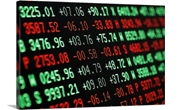Futures

Futures: The Slow Erosion of HR Prices
Written by Jack Marshall
May 11, 2023
After surprising the market watchers of HR futures in the first week of May, the index finally gave back $40 per short ton (ST) in the second week, coming in just shy of $1,130/ST.
Interestingly, the May futures settlement was almost unchanged from April 10 . While the market may be in a hurry for price corrections, the indexes prove they tend to lag.
Reports of scarce physical activity, along with declining lead time deliveries from mills, seem to have increased bearish sentiment. Softness in global steel demand, as well as increasing imports, have only added to concerns that prices could slide further. In spite of the steeply backwardated futures curve, hedging participants are still wary that prices could slide even further, which appears to be muting volumes. In addition, the steep decline in prices between futures months is adding to concerns for service centers of being stuck with expensive contract tons should the velocity of the price decline increase. Lower spot volumes tend to slow the index prices declines.
In the last month, futures volumes have been steady with just under 20,500 lots traded. Open Interest finished April just above 30,200 lots. We have seen a slight erosion in activity as participants remain on the sidelines due to reduced physical activity. Over the last month, settlement prices have eroded somewhat: Q3’23 prices have on average declined by about $55/ST, Q4’23 prices have on average declined by about $45/ST, and 1H’24 quarterly prices have eased roughly $25/ST.

Receding global demand for scrap left export prices considerably lower with 80/20 in the $375/ton range. While the market was anticipating a $25-30 price decline in BUS for May.
The market demand for prime scrap kept BUS above $550/ST for May’23 value, less than a $16/GT decline. Will the scheduled summer model changeovers at the auto manufacturers be enough to offset the increased EAF capacity that is coming on-line? The jury is still out on that. BUS prices have been proving to be very sticky.

Editor’s note: Want to learn more about steel futures? Registration is open for SMU’s Introduction to Steel Hedging: Managing Price Risk Workshop. It will be held on April 26 in Chicago. Learn more and register here.
By Jack Marshall of Crunch Risk LLC

Jack Marshall
Read more from Jack MarshallLatest in Futures

HR Futures: Nascent rally in HRC futures settles above 6-week downtrend
The CME Midwest HRC futures market’s response to Trump’s election and subsequent comments about blanket 25% tariffs on Canada and Mexico was surprisingly counterintuitive.

HR Futures: Market at crossroads after turbulent run
The market appears to be pausing after a turbulent run. But tension remains just beneath the surface. With net long positioning still elevated, sentiment-driven selling could quickly reignite volatility. Still, supply constraints and limited imports are laying the groundwork for a resilient physical market. This moment of calm feels more like a crossroads than a conclusion.

HR Futures: Traders’ views mixed as market navigates tariffs
A look at the HR futures market.

Market pressures trigger HR futures reversal
Market dynamics are shifting rapidly, with futures pricing diverging from physical fundamentals, creating a complex landscape for steel traders.

HR Futures: Correction in market after big rally
Another eventful week in the physical and financial steel markets is coming to a close, but with a markedly different tone than the last update at the end of February.
